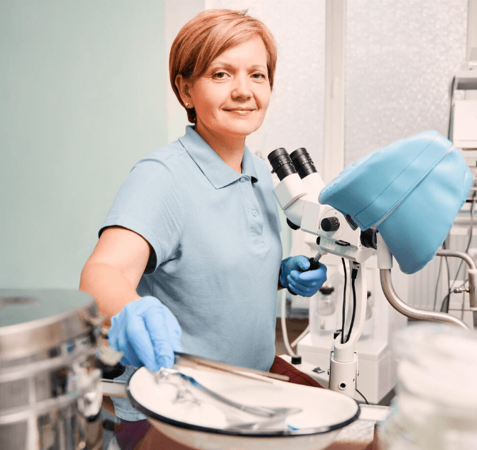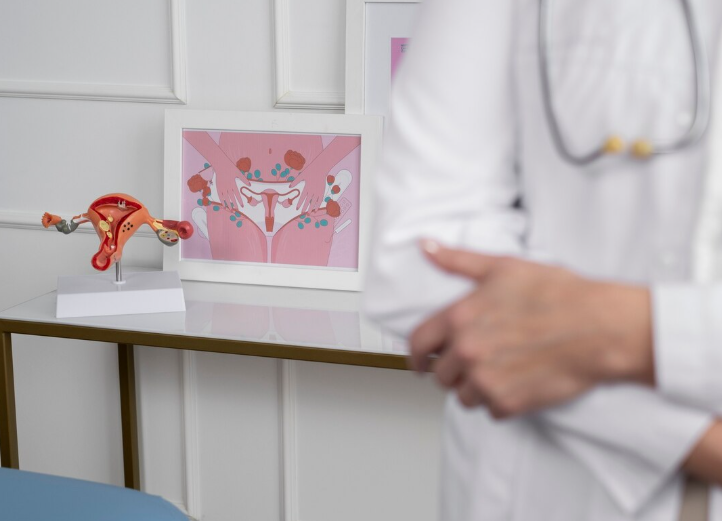Treatment Overview
A pelvic ultrasound is a non-invasive imaging test used to evaluate the urinary tract and pelvic organs, such as the bladder, kidneys, uterus, and ovaries. In cases of urinary tract infection (UTI), a pelvic ultrasound plays a vital role in diagnosing the underlying cause, detecting complications, and ruling out structural abnormalities that may contribute to recurrent infections.
In Korea, pelvic ultrasound for urinary tract infections is performed using high-resolution and 3D/4D imaging technology, offering unmatched precision and clarity. Korean gynecologic and urologic specialists rely on this diagnostic tool to provide targeted, personalized treatment for women suffering from acute or chronic UTIs.
Korea’s combination of cutting-edge imaging systems, skilled radiologists, and integrated women’s health centers makes it a leading destination for comprehensive urinary health evaluations.
Purpose & Benefits
The main purpose of a pelvic ultrasound in UTI management is to obtain detailed images of the pelvic and urinary organs to identify any abnormalities that may cause or worsen infections.
Key benefits include:
- Early detection of structural issues such as bladder wall thickening, kidney stones, or urinary retention.
- Identification of complications such as abscesses or inflammation.
- Non-invasive and radiation-free imaging suitable for all women, including pregnant patients.
- Accurate guidance for follow-up or further tests if recurrent infections are found.
- Helps differentiate between lower urinary tract infection (cystitis) and upper tract infection (pyelonephritis).
With Korea’s advanced ultrasound systems, physicians can detect subtle changes in the bladder or kidneys early, ensuring timely and effective treatment.
Ideal Candidates
Pelvic ultrasound for UTI diagnosis in Korea is ideal for women who:
- Experience recurrent or persistent urinary tract infections.
- Have symptoms such as frequent urination, pelvic pain, or hematuria (blood in urine).
- Need further investigation after initial urine tests or antibiotic treatments.
- Have risk factors such as diabetes, pregnancy, or anatomical irregularities.
- Want a comprehensive evaluation of both urinary and reproductive organs in one session.
Korean clinics offer personalized ultrasound packages tailored to women’s needs, making this procedure suitable for all age groups.
Possible Risks & Complications
Pelvic ultrasound is one of the safest diagnostic imaging methods available. Since it uses sound waves instead of radiation, it has no known health risks.
The only mild inconvenience may include:
- Slight discomfort from a full bladder during a transabdominal scan.
- Temporary pressure sensation during a transvaginal scan.
Korean medical centers prioritize patient comfort, using the latest ergonomic ultrasound probes and private exam rooms to ensure a smooth, stress-free experience.
Techniques Used
Korea employs advanced ultrasound technologies to ensure superior diagnostic accuracy:
- Transabdominal Pelvic Ultrasound: Conducted through the lower abdomen, providing a broad view of the bladder, kidneys, and surrounding organs.
- Transvaginal Ultrasound: Provides a more detailed view of the bladder base, urethra, and reproductive organs, especially useful for identifying infection-related complications.
- 3D/4D Ultrasound Imaging: Enhances visualization of pelvic structures and provides more accurate measurements.
- Color Doppler Ultrasound: Used to evaluate blood flow and detect inflammation or vascular changes caused by infection.
Korean hospitals often use AI-assisted ultrasound interpretation systems, improving diagnostic precision and reducing error rates.
Recovery & Aftercare
A pelvic ultrasound requires no recovery time — patients can resume normal activities immediately after the procedure.
After the scan:
- The results are typically available within the same day.
- The doctor will review findings and discuss the next steps, which may include antibiotic therapy or additional tests.
- Patients are encouraged to maintain hydration and follow preventive measures to avoid future UTIs.
Korea’s healthcare system ensures efficient same-day testing, diagnosis, and treatment, making it convenient for both residents and medical tourists.
Results & Longevity
Pelvic ultrasound provides instant and long-lasting diagnostic value by revealing the root causes of infection or recurrence. Once abnormalities are identified and treated, the results guide future preventive strategies, ensuring better urinary health and fewer infections over time.
Korean specialists integrate ultrasound findings with other diagnostic tools — such as urine culture, blood tests, and cystoscopy — for comprehensive UTI management.
Treatment Process in Korea
The process of undergoing a pelvic ultrasound for UTI in Korea is highly efficient and patient-oriented:
- Consultation: The gynecologist or urologist reviews symptoms and medical history.
- Ultrasound Procedure: Conducted transabdominally or transvaginally using advanced imaging technology.
- Interpretation & Diagnosis: Images are analyzed immediately by a specialist.
- Personalized Treatment Plan: Based on findings, the doctor may recommend medication, lifestyle changes, or preventive measures.
- Follow-Up: Regular checkups are scheduled to ensure infection resolution and prevent recurrence.
Many Korean clinics offer integrated same-day service, allowing patients to receive consultation, ultrasound, and medication within a single visit.
Why Korea Is a Top Destination for Pelvic Ultrasound
Korea stands out globally for its medical precision, advanced imaging equipment, and multidisciplinary approach. Patients benefit from:
- World-class imaging centers equipped with GE Voluson and Philips EPIQ systems.
- Experienced radiologists and gynecologists specializing in women’s urinary health.
- Quick scheduling and short waiting times.
- Transparent costs and English-speaking medical staff.
- Personalized care integrating traditional and modern medical practices.
This combination of quality, technology, and convenience makes Korea a preferred choice for accurate UTI diagnosis.
Cost Range
- Transabdominal Ultrasound: ₩80,000 – ₩150,000 KRW ($60 – $120 USD)
- Transvaginal Ultrasound: ₩100,000 – ₩200,000 KRW ($80 – $150 USD)
- Comprehensive Pelvic Ultrasound Package (with consultation & urinalysis): ₩250,000 – ₩450,000 KRW ($190 – $340 USD)
Costs may vary by clinic, imaging technology, and additional diagnostic tests.
Popular Clinics
- Seoul National University Hospital
- Asan Medical Center
- Samsung Medical Center
- CHA Gangnam Women’s Medical Center
- Ewha Womans University Mokdong Hospital
- Woorisoa Women’s Clinic, Seoul
These clinics are renowned for their expertise in ultrasound imaging, urinary tract health, and comprehensive women’s diagnostics.




